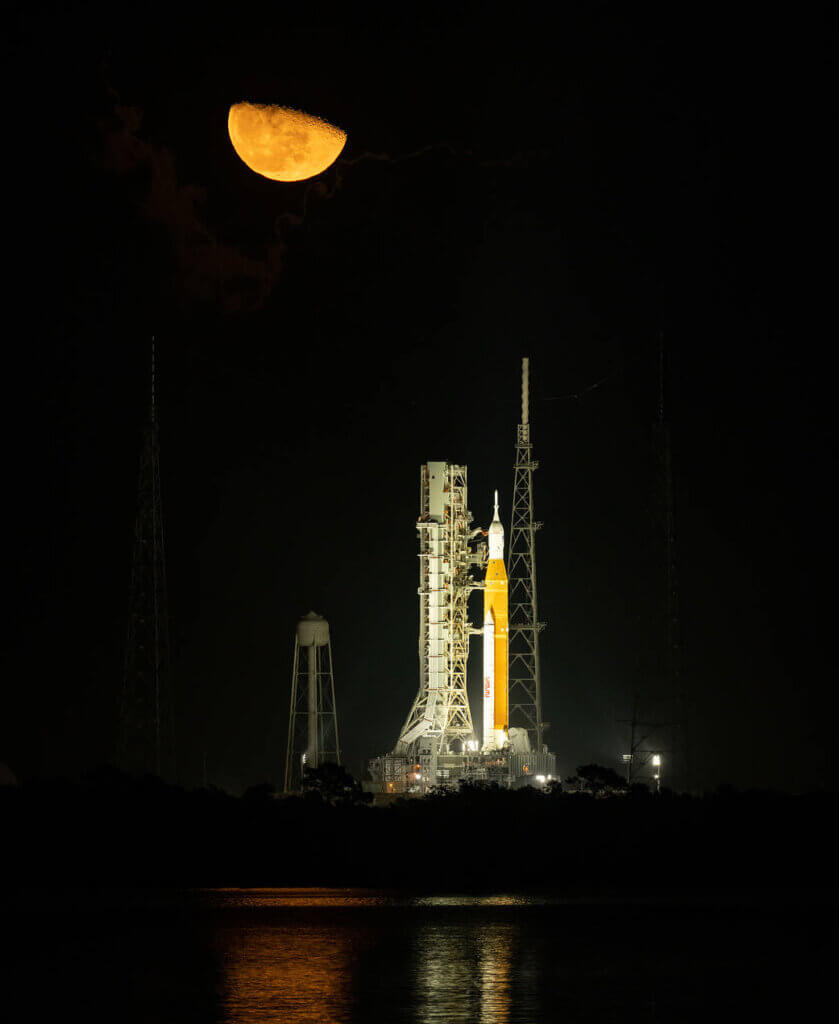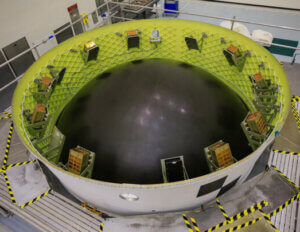
When the Space Launch System (SLS), NASA’s most powerful rocket to date, launched on November 15, 2022, four of MMA Design’s HaWK Solar Arrays await their turn to finally spread their wings to study the Earth, the Moon and beyond! Accompanying the important Artemis I payload of mannequins – in preparation for its ultimate human cargo when the US returns to the moon – 10 cubesats are hitching a ride as secondary payloads. Four of those missions will be powered by MMA HaWK Solar Arrays.

Image credits: NASA
BioSentinel, a collaboration with NASA Ames Research Laboratories, will demonstrate a biosensor to detect, measure, and correlate the impact of space radiation to living organisms over long durations beyond Low Earth Orbit (LEO). MMA’s BioSentinel HaWKs are a combination of two standard MMA HaWK configurations, one of which is actuated by our Solar Array Drive Assembly (SADA), for a combined 84 W of peak power.
The EQUULEUS mission HaWK configuration includes wings that are gimbaled on a common single axis of rotation using MMA’s SADA which spans the 1U x 2U face of the cubesat. The array provides 56 W of peak power. EQUULEUS, a University of Tokyo/JAXA mission that MMA was honored to work on, will measure the distribution of plasma surrounding the Earth’s plasmasphere to help scientists understand the radiation environment in that region.
In partnership with the team at Arizona State University, MMA delivered enhanced HaWK (eHaWK) Solar Arrays with 112 W of peak power in support of their LunaH-Map mission. Both wings are positioned using MMA’s SADA which spans the 1U width of the spacecraft. This mission, from ASU’s School of Earth and Space Exploration, searches for hydrogen deposits on the Moon’s south pole by creating higher-fidelity maps of near-surface hydrogen in craters and other permanently shadowed regions with neutron spectrometers.
And, working with JPL and NASA’s Marshall Space Flight Center, NEAScout is a robotic reconnaissance mission headed beyond the moon. NEAScout will deploy a solar sail to fly by, and return data from, an asteroid representative of other near-earth asteroids (NEAs) that may one day be human destinations. MMA’s HaWK array will contribute 42 W of peak power for the NEAScout mission.
The greatly anticipated launch of SLS and Artemis I lead the way for future human exploration of the moon and, importantly, flight test four more MMA HaWK Solar Array configurations. MMA’s HaWK Solar Arrays lead the industry in high-performance space power solutions by delivering more watts per kilogram and more kilowatts per cubic meter for CubeSats as well as larger platforms.
